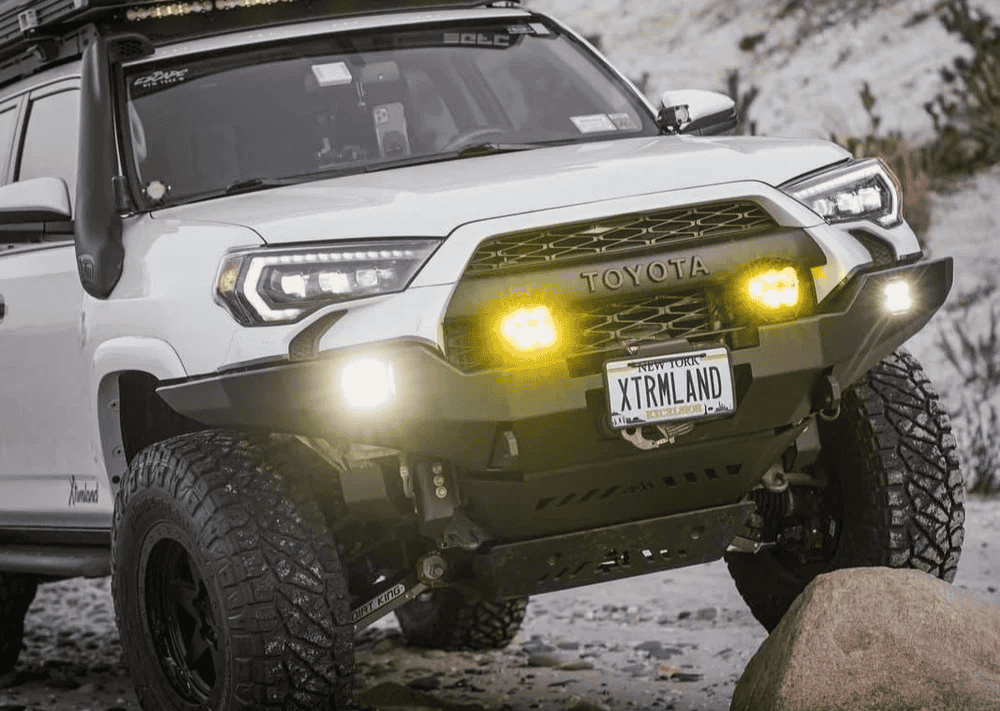Overland Vehicles

Mud is more than wet dirt. Clay plates can stack tightly and create a slick surface that packs into tire voids. Loam holds water yet keeps some structure, while peat compresses and rebounds under load. Each soil type changes how a tread block shears the surface and how momentum translates into forward bite.
When lugs pack with paste, tires lose their mechanical keying. That is why self cleaning tread design, wheel speed control, and timely throttle lifts matter. Let the lugs empty, then reapply torque so edges can bite again. In deeper ruts, the axle line becomes a plow. Ground clearance and a smooth underbody help the vehicle glide instead of anchor.
Water on top of mud lowers friction further. The goal is to maintain a steady crawl or a measured surge without spinning the tires. Too much wheel speed liquefies the surface and digs holes. Too little momentum leads to high centering. The sweet spot changes with moisture, temperature, and base layer firmness.
Mud terrain tires use wider voids and stronger shoulders to evacuate muck. Drop tire pressure just enough to enlarge the footprint and allow tread blocks to wrap uneven surfaces. Avoid going so low that the sidewall folds or the bead risks unseating. Build momentum before the sticky section, then keep a calm throttle to preserve forward bite.
The mud terrain explorer benefits from simple, durable upgrades. A moderate lift improves breakover and approach angles while allowing true mud tires in practical diameters. Skid plates shield sensitive components from ruts and hidden stumps. Differential breathers routed higher prevent water ingress during crossings.
Recovery points front and rear should be rated and easily accessible. A quality winch with synthetic line reduces weight and improves handling in water. Pair it with a tree protector, snatch block, soft shackles, and a damper. Traction boards create a fast reset when only one or two tires have purchase.
Lighting helps you place tires precisely at dawn, dusk, or in wooded corridors. Waterproof connectors, sealed switches, and proper routing minimise electrical gremlins. Inside the rig, a simple gear layout keeps recovery tools reachable without unpacking the whole cargo area.
Good driving technique starts with patience. Walk the obstacle, pick a line that avoids the deepest troughs, and understand where the differential pumpkins will pass. Use second gear low range when appropriate to balance torque and wheel speed. Keep steering smooth to avoid slicing the top layer into soup.
Plan your day around moisture. Trails that drive well in the afternoon can be impassable after a night rain. Study local soil types, seasonal closures, and water table changes. Give yourself daylight margin so any recovery effort is unhurried and safe.
Tread lightly principles matter. Avoid spinning holes that chisel the trail. Skirt wetlands only where designated, and do not bypass gates or barriers. Clean your undercarriage later to prevent moving invasive seeds to the next forest. A mud terrain explorer who thinks ahead protects both the vehicle and the places we love to drive.
Redundancy is your friend. Offline maps with satellite layers help you spot lowlands and potential exit routes. A small compressor, pressure gauge, and plug kit close the loop when airing down. Keep comms with a handheld radio or a satellite device if cell service drops.
If your build plan calls for measured traction, reliable recovery, and clean power management, specialized fabrication and upfit work make a difference. Suspension tuning, tire fitment, armor, lighting, and sealed electrical layouts transform theory into daily reliability on muddy corridors. For a deeper dive into platform options and trail focused configurations, start with Overland rigs and see what a purpose built chassis looks like.
When you are ready to translate your checklist into hardware, our team outlines a clear upfit path from assessment to final shakedown. Explore options for armor, drivetrain protection, onboard air, and communications under Custom overland upfit. For a sense of process, quality control, and why our handoff experience sets you up for success, visit Why choose OZK Customs.
Your next muddy route should feel like a puzzle you are ready to solve. Tell us where you travel, the soil you face, and how you camp, and we will build an overland solution that matches the map. From full custom adventure vans to targeted upfits on proven platforms, we design with traction, protection, and off grid comfort in mind. We do not rent vehicles, and we do not support DIY builds. We build and upfit purpose driven rigs that carry you through the wet season and home again.
Ready to turn theory into trail miles. Tell us how you travel, and our team will design an overland upfit that grips through clay, drains fast after river crossings, and keeps you powered off grid. Start your build conversation and get a timeline, budget range, and a clear path from sketch to handoff.
ADDRESS:
6159 E Huntsville Rd, Fayetteville, AR 72701
PHONE:
(479) 326-9200
EMAIL:
info@ozkvans.com